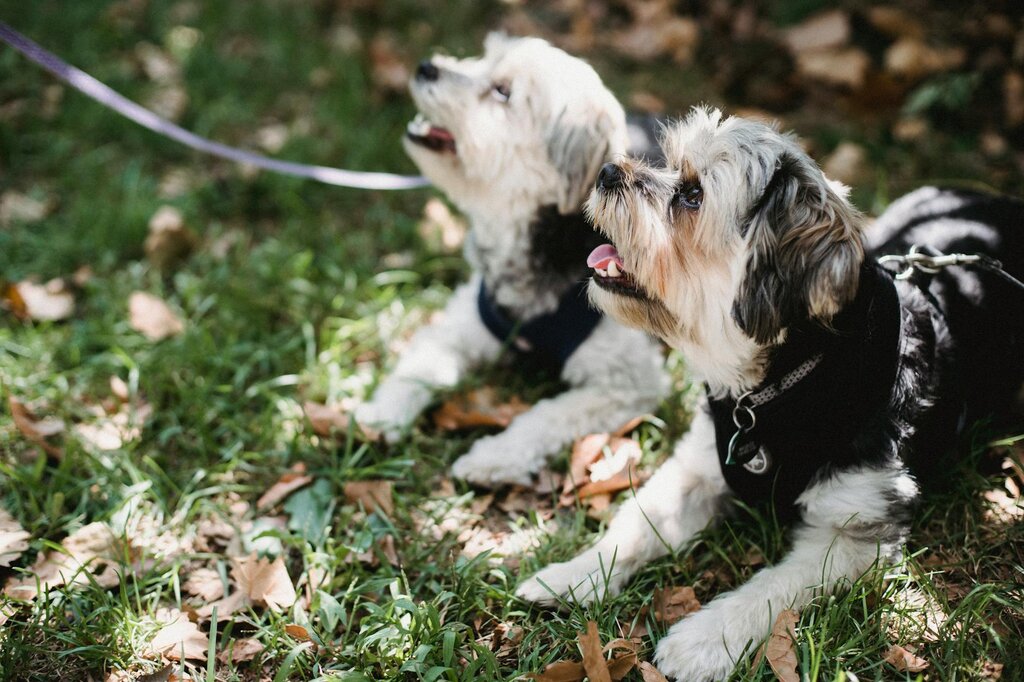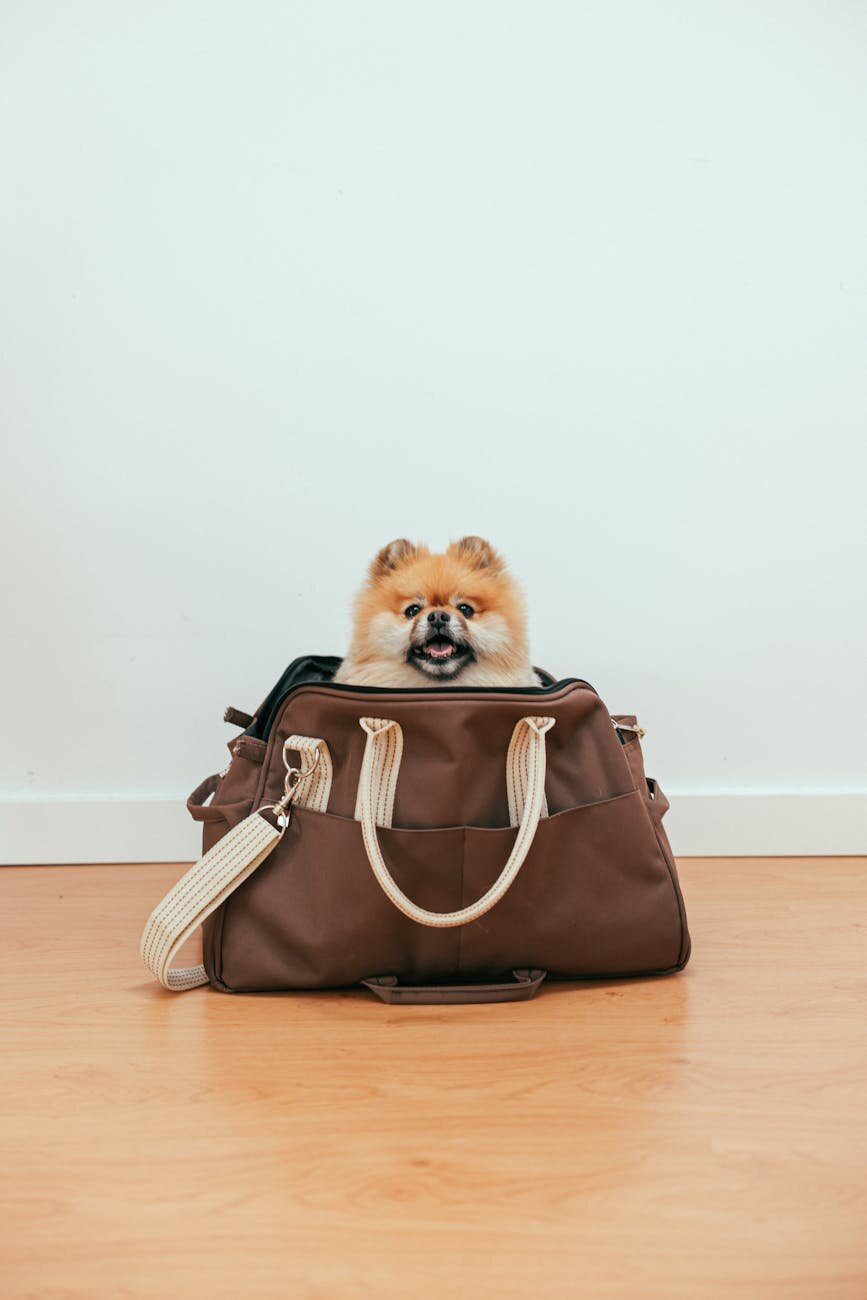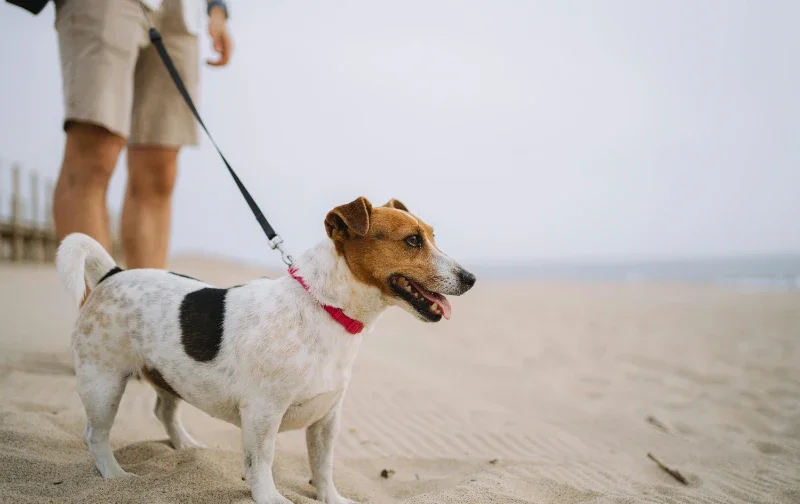Last Updated: 19/11/2025
How to Fly with Your Pet: The Complete Vet Checklist
Planning to fly with your pet? Our vet-written guide covers everything for a smooth journey. Learn about essential health checks, airline rules for domestic and international travel, crate training tips, and a checklist for the big day to ensure your companion travels safely and comfortably.
Author: Dr Gillian Hill BVSc (Hons)
Reading Time: 10 minutes - short read
Flying with your pets can be a rewarding experience, allowing you to travel with your beloved companions and create lasting memories together. And, with the announcement by Virgin Australia that small pets will be allowed to fly in the aircraft cabin on certain domestic routes from October 16, 2025, many pet owners will be more open to flying with their pets!
Air travel with pets requires careful planning and preparation to ensure a safe and comfortable journey for your furry friends. From understanding the rules and regulations to preparing your pet for the flight, there are several steps you need to take to make sure everything goes smoothly.
In this article, we'll guide you through the process of preparing to fly with your pets, covering everything from health checks to quarantine requirements for international flights, so you can embark on your journey with confidence and peace of mind.
Before You Decide to Travel

Talk to your vet
Before booking any tickets, a thorough health check with your vet is essential to ensure your pet is fit for air travel.
- Assess fitness to fly: Your vet will check for any underlying medical conditions that could be worsened by air travel.
- Breed considerations: Brachycephalic breeds with flat faces (like Pugs and Persians) are prone to respiratory issues and may not be safe to fly.
- Size and stress levels: Large dogs who exceed the weight limit, or pets who find travel stressful might be better suited to car travel.
- Health certificate: Ask your vet for a letter confirming your pet is in good health, as the airline may require this at check-in.
- Travel comfort: Your vet can provide advice on hydration, feeding schedules, and managing travel anxiety to make the journey as smooth as possible.
- Airline policies: It's also important to research your chosen airline's specific policies regarding pet age, size, and breed restrictions.
Update vaccinations and parasite prevention
Your pet's vaccination and parasite control needs will vary depending on your destination.
Domestic flights:
- Check the Australian Interstate Quarantine website for specific requirements for your destination state.
- For example, dogs travelling to Tasmania require treatment for hydatid tapeworm and must be certified free of ticks upon arrival.
- Ensure your pet is protected against parasites like Paralysis Ticks, and those carrying diseases like Ehrlichosis spread by Brown Dog Ticks. For more information on which treatment you need, see Which Flea and Worming Product do I need?
International flights:
- Be aware that preparation can take six months or more, so plan well in advance.
- Each country has unique vaccination and quarantine rules. Start by visiting the Department of Agriculture, Fisheries and Forestry Exporting Companion Animals and other Live Animals website.
- Using a pet travel agency is required for international travel and can help navigate the complex requirements. It is best to seek an AQIS-accredited vet for assistance.
Research the process and rules
Understanding the end-to-end travel process is critical for a smooth journey.
- Domestic travel: Contact your airline directly to understand their procedures for checking in and collecting your pet.
- International travel: Contact the embassy of your destination country for detailed information on their import requirements.
- Returning to Australia: Be aware that pets cannot be imported from certain countries. If you plan to bring your pet back to Australia, you may need to make arrangements before you leave.
- Pet transport companies: Consider using a specialist pet transport company, even for domestic flights. They are experts in the process and can help avoid delays. Most airlines require their use for certain breeds, even on domestic flights.
Preparing to Depart

Get your pet used to their crate
Airlines have regulations for pet travel crates and carriers, and it is important to do your research with plenty of time to spare. In general, it is important to choose a crate or carrier in which your pet is able to stand up fully, and turn around freely within the crate. Crates for brachcephalic breeds may have specific requirements depending on the airline. Specialised air travel crates will have a fixed water container to ensure that your pet has access to water at all times during travel. In-cabin carriers will have specific requirements for size and features (e.g. having soft-sides, being well-ventilated, and escape-proof).
In preparation for your journey, if possible it is a great idea to get your pet used to their crate or carrier. This will go a long way in helping your pet remain calm and settled on the journey. While still at home, encourage your pet to feel comfortable in and around their crate, by placing their favourite toys, treats and bedding inside. It can help to put some clothing with your scent on it in the crate. You can also spray the crate with Adaptil for dogs, or Feliway for cats. These synthetic pheromones are designed to promote feelings of calm, and reduce stress and anxiety.
On the Day
Feeding Guidelines
For domestic travel, it's recommended to not feed your pet 6-8 hours before flying as anxiety and motion sickness can cause symptoms such as vomiting and even diarrhoea. If you're flying your dog, make sure they get a hearty exercise the day before and a light exercise on the day to help them relax.
Ensure that your pet has free access to fresh water at all times. In flight dehydration is very common so make sure your pet gets a drink before going in their crate/carrier and goes to the toilet.
Treats and toys
For dogs, avoid in flight treats like bones, pigs ears or rawhide. Once small enough, some dogs will try to swallow these whole which can present a significant choking hazard.
As a comfort, it's good to include one of your pet's favourite toys, just make sure you've tested it's durability prior. For example, if your dog is a persistent chewer, a poor quality toy can turn into a choking hazard.
Crate necessities
Carriers must be lined with an absorbent material prior to boarding in the event of any accidents. Pee pads are recommended over newspaper with their superior absorption to soak up spills quickly. Ensure that the carrier is securely closed and latched, and clearly labelled with your pet's name.
Documentation
Ensure that you have all necessary documentation, veterinary certificates, toys, food, lead and medication for your trip.
Arrive at the airport early, to allow plenty of time for check-in and security checks.
Arriving at Your Destination

Once you and your pet have arrived, focus on helping them feel comfortable and settled after the journey.
- Immediate release: Let your pet out of their travel crate as soon as it is safe to do so.
- Stretch and relieve: Allow them time to stretch their legs and go to the toilet.
- Hydrate and refuel: Offer them fresh water immediately, followed by a small meal.
- Settle in slowly: If you're in new accommodation, introduce them to the surroundings gradually.
- Provide familiar comforts: Give them their favourite toys or bedding to help them feel at home.
- Monitor their health: Keep a close eye on their eating and drinking habits, as travel can cause stress-related changes.
- Give lots of love: Reassure them with plenty of attention and affection to help them adjust smoothly to the new environment.
Pet Air Travel Checklist
- Visit your vet to ensure your pet is fit, healthy and suitable for air travel
- Check your airline's policies, and if travelling internationally, your destination country's regulations for pet travel and export
- Ensure that your pet's required vaccinations and parasite prevention are up to date
- If planning to return with your pet to Australia, check the rules regarding bringing your pet back into the country
- Get your pet used to their travel crate
- Make a plan for the day of travel
- Do not feed your pet closer than 6-8 hours prior to travel
- Ensure they have access to fresh water at all times, and encourage them to have a drink before the flight
- Do not sedate your pet
- Do not clothe your pet for travel
- Make their crate comfy
- Ensure that you have all the necessary documentation, veterinary certificates, food, toys, lead and medication for your trip
- Stay calm and enjoy your trip!
FAQs
In conclusion, flying with your pets can be a rewarding experience, but it requires careful planning and preparation. Before you decide to travel, talk to your vet to ensure your pet is healthy and can travel by air. Update vaccinations and parasite preventions according to your destination's requirements. Research the process and rules for pet travel, especially for international journeys.
Preparing to depart includes getting your pet used to their crate and ensuring they are comfortable. On the day of travel, avoid feeding your pet before flying, provide access to water, and avoid sedating them. Arrive at the airport early and ensure you have all necessary documentation, toys, food, and medication for your trip.
By following these steps and taking the necessary precautions, you can ensure a safe and comfortable journey for your furry friend, allowing you to enjoy your travels together with peace of mind.
Articles recommended for you
Our vet authored guide to the benefits of feeding your dog fresh food plus tips and advice for introducing it into their regular menu.
See our guide to protecting your pet from parasites from our vet team.
Thinking of getting a fish? Check out our guide for setting up a tank and home care tips!
Looking to understand horse feeds better? This comprehensive guide covers feeding recommendations for horses of all ages and disciplines.
Does your pet suffer from anxiety? Check out our Vet-guide for treatment options to help your pet.
History
Our experts continually monitor the health and wellness space and we update our articles when new information becomes available.
Thu 25 Sep 2025
Edited by Dr Gillian Hill BVSc (Hons)Dr Gillian Hill BVSc (Hons)
Veterinarian
Dr. Gillian loves being able to provide depth and detail to pet parents questions, and give up to date, evidence based advice. She loves the variety of pets and inquiries she receives - she especially loves the 'curly' questions that require some research! Seeing the gorgeous photos that pet parents send through of their babies is a highlight of the day! Gillian enjoys to further her veterinary knowledge, and has completed further training in ultrasonography, behaviour and backyard poultry!

